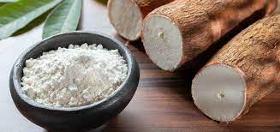- europages
- >
- COMPANIES - SUPPLIERS - SERVICE PROVIDERS
- >
- tapioca starch
Results for
Tapioca starch - Import export
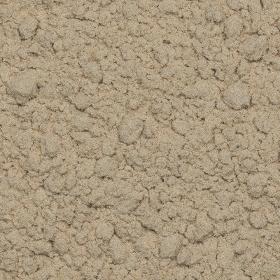
NATURELL AB
Sweden
Energy 1530 Kj , 362 Kcal Fat Of which saturated 3.3 g , 0.8 g Carbohydrates Of which sugar 68.5 g ,1.3 g Fibers 8 g - Protein 13.3 g Salt 0.03 g
Request for a quote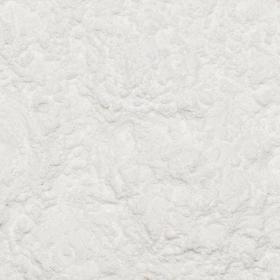
NATURELL AB
Sweden
Energy 1367 Kj , 322 Kcal Carbohydrates Of which sugar 80 g,4 g Fibers 0.9 g - Salt 0.01 g
Request for a quote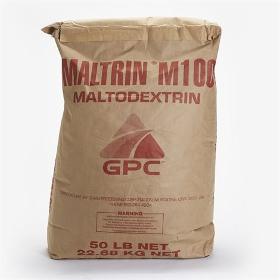
ADANA CHEM SAN A.S
Turkey
Maltodextrin obtained by partial hydrolysis of starch; They are water-soluble, tasteless products and are defined by the FDA as products with DE values of less than 20. C6H12O6, which is also on the GRAS list; It is an excellent mass builder for standard and low-fat products. Maltodextrin is an intermediate between starch and glucose obtained during controlled starch hydrolysis involving enzymes such as bacterial alpha amylase, and is subjected to additional conversion processes to have the desired DE of 4-30. Following these processes, the product; It is refined by processes such as clarification, carbon treatment and ion exchange, and spray-dried to 3-5% humidity. C6H12O6, a white, low sweetness powder, does not hold water on its own, but its solution shows a very high viscosity. Due to its indefinite neutral taste, it does not affect other food flavors, easily disperses in cold and aqueous based systems, and exhibits a structure that can preserve its clarity and appearance
Request for a quote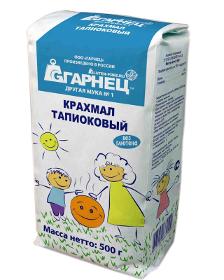
GARNEC LLC
Russia
Tapioca starch is distinguished by the fact that it increases viscosity of the product without coloring it. The properties of tapioca starch are very similar to the properties of potato starch. It is used in many glutenfree baking recipes to make the dish look better or to achieve a golden crust. This product does not contain gluten. The product is tested for gluten at each production phase. Garnec was the first in Russia to receive the right to label its products with the “Crossed Grain” trademark. This trademark is a safety mark for glutenfree products of the Association of European Coeliac Societies, recognized in most developed countries.
Request for a quote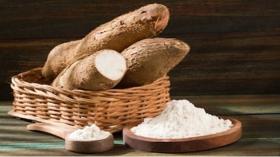
BIRMINGHAM INDUSTRIES (UK, INDIA)
United Kingdom
Our A grade tapioca starch is manufactured from the highest quality tapioca tubers and meets the highest standards. It is an easily adaptable product and can be applied across a variety of industries such as: Textiles (sizing, finishing, printing) 1. Glues and Adhesives 2.Paper and cardboard 3.Rubber and foam 4.Paint fillers and putty. Our sales team would be happy to help find the correct starch derivative for your industrial needs. We have the capacity to modify starches based on your individual needs and can manufacture them based on your exact specifications.
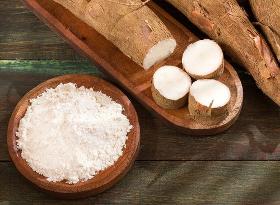
BIRMINGHAM INDUSTRIES (UK, INDIA)
United Kingdom
This starch may be derived from tapioca and is used primarily as a wet-end starch and mainly used in paper and cardboard forming processes: 1.Increases mechanical strength for better retention of fines and fillers 2.Enables faster drainage and improved sheet formation and production, saving both time and resources. 3.Improves opacity, brightness and stiffness of paper and allows for better printing quality. 4.It is also popularly used in the manufacture of disposable diapers (nappies) and personal sanitary products.
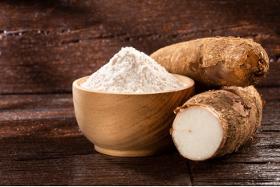
BIRMINGHAM INDUSTRIES (UK, INDIA)
United Kingdom
Oxidized starches are highly versatile and are widely applied in paper and board making processes: Shorter chain lengths of these starches help to improve whiteness of paper and reduces microbiological content. Can be used as a surface sizing agent as they improve printability, fibre lay, fold and tensile strength. Are available in different viscosity grades and may be used in a coating binder or base as they improve ink fixing and gloss, reduce picking and demonstrate controlled binder migration. They are the preferred thickener for applications requiring gels of low rigidity and have also shown to improve adhesion in batters and breading. Oxidized starch has also been used in the making of construction materials such as concrete blocks, gypsum board and fire-resistant wall- boards. Applications: 1.Paper production 2.Coating binder 3.Construction materials: concrete blocks, gypsum board. 4.Plywood adhesives 5.Colour pigment binder
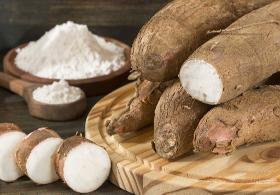
BIRMINGHAM INDUSTRIES (UK, INDIA)
United Kingdom
Tapioca starch is used across a variety of culinary disciplines and is particularly useful for thickening, gelling, binding, and stabilising food products. The tapioca starch that we manufacture provides: Neutral flavour and appearance Superior texturizing, mouthfeel, and freeze-thaw qualities Crispiness to crumb coats Structural resilience to baked goods, noodles, and pastas. A great nutritional value since it is rich in calcium and vitamin B12. Tapioca starch may be applied in a variety of foods including: 1.Soups, Sauces,and dressings 2.Baked items,e.g. Pastries and pies 3.Extruded foods 4.Cooked meats 5.Ice cream and Ice cream cone manufacturing 6.Noodles and pastas
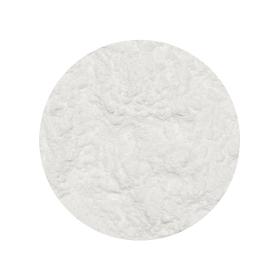
VEHGRO B.V
Germany
"Where does tapioca come from? Tapioca is a tasteless and starchy ingredient and comes from the root of the Manioc plant (Cassava plant, Yucca plant). It is a shrub that can grow between 2 and 5 metres tall. The plant originally comes from South America but was spread around the world by European explorers. Today, the plant is grown mainly in Brazil, Thailand, Indonesia, Zaire and Nigeria. Tapioca applications Tapioca flour is used as a thickener in food (in soups and sauces), medicine (tablets) and animal feed, but is also an important ingredient of prawn crackers."
Request for a quote
AGRANA STARCH
Austria
We offer modified and native rice, corn and tapioca starches for the cosmetics industry. For example, these are used in the following applications: - Emulsionen - Decorative Cosmetics - Powder, - Dry Shampoos & Conditioners, - Deodorants, - Liquide Shampoos & Conditioners
Request for a quote
VEHGRO B.V
Germany
"What is Maltodextrin? Maltodextrin is a polysaccharide (carbohydrate) that has the unique ability to bind fats and oils. It is used to improve the texture of food and drinks. Maltodextrin is also used as a powdered dietary supplement by athletes. DE-qualification Maltodextrins are classified according to their Dextrose Equivalent (DE) and can have a DE value between 3 and 20. The higher the DE value, the shorter the glucose chains and thus the sweeter the maltodextrin. Maltodextrins with a DE value up to and including 10 are considered to be non-sweet. Above the DE value of 20 it is so sweet that it may no longer be called maltodextrin. Then it is called glucose syrup. Maltodextrin DE-10 of Tapioca starch This maltodextrin is made from Tapioca starch. The starch is hydrolyzed with natural enzymes (GMO free) and then dried by a spray process. The powder is white, has a neutral taste and can in diluted form improve the viscosity of products."
Request for a quote
HORST WALBERG TROCKENFRUCHT IMPORT GMBH
Germany
Productinformation Wasabi crackers are crunchy, light, puffed rice waffles, spiced with hot Japanese horseradish and a fine hint of garlic. Wasabi enthusiasts appreciate this variety-rich snack. Ingredients Rice, soy sauce (soy, wheat), sugar, palm oil, wasabi flavor, tapioca starch, coloring: E106a, E141. The product contains fish and mustard. Different combinations exist. We require those that you sell. Origin n/a
Request for a quote
HORST WALBERG TROCKENFRUCHT IMPORT GMBH
Germany
Productinformation The extremely varied nori mix tastes just as delicious as it looks. This high-quality blend consists of rice crackers and peanuts, and is delicately seasoned with soy sauce according to an authentic, original Japanese recipe. Crispy, light and simply delicious. Ingredients Rice, soy sauce (soybeans, wheat, salt), sugar, peanuts, wheat flour, black soybeans, sesame, seaweed, sunflower seed oil, tapioca starch, salt, fish extract (fish, flavor enhancer: E621) chili powder, coloring E120, E141, E150a, E160a, E160c, flavor enhancer: E621 (monosodium glutamate)) Origin Of course, this snack specialty comes to us from Asia.
Request for a quote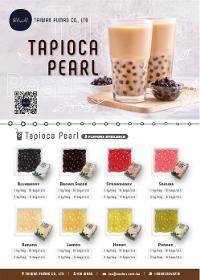
JING HENG SING TECHNOLOGY CO., LTD.
Taiwan R.O.C.
Indulge in the delightful chewiness of our tapioca pearls! Made from cassava root starch, our tapioca pearls are cooked to perfection, resulting in a satisfyingly chewy texture. These versatile pearls are ideal for creating bubble tea, desserts, or adding a unique touch to your favorite beverages. Experience the joy of tapioca pearls and elevate your culinary creations to a whole new level of deliciousness!
Request for a quote
SILKPORT INTERNATIONAL LIMITED
United Kingdom
Coconut Shell Charcoal Briquettes - Are made from coconut shell which are carbonized in a limited supply of Oxygen, then compressed, mixed with binder and molded into desired shapes. 100 % Natural and Premium Quality - This briquettes are extremely high quality and made from 100% pure coconut shell and all-natural tapioca or corn starch to bind the charcoal briquettes; therefore, 100% food-grade product. No harmful chemical or additive is added. In other words, you can enjoy the food safely without the need for any health concerns. Eco Friendly and Sustainable - No single tree is cut down and a sustainable alternative heat source with minimum greenhouse gas emission. Shape: Pillow / Hexagonal Dimension: Fixed Carbon: 71% Moisture Content: <5% Volatile Matter Content: 14% Ash Content: <6% Burning Time: >2.5 hours Color: Black Usage: Hookah, shisha, smoking, grilling, incense, barbecue or other burning usage
Request for a quoteDo you sell or make similar products?
Sign up to europages and have your products listed
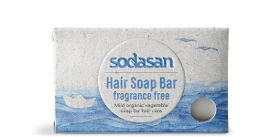
SODASAN WASCH- UND REINIGUNGSMITTEL GMBH
Germany
Gently cleans your hair and scalp and is particularly economical. Dosage Rub the soap over your wet hair a few times and massage into a lather. Tip: An acidic rinse (comprising 1 litre water and 2 Tbsp e.g. apple cider vinegar) is especially recommended if you have hard water. sodium palmate sodium palm kernelate aqua fatty acids C12-18 and C18-unsaturated elaeis guineensis kernel oil tapioca starch glycerin sodium chloride butyrispermum parkii butter sodium hydroxide citric acid Made with certified organic ingredients. Ingredients from certified organic agriculture.
Request for a quote
BIRMINGHAM INDUSTRIES (UK, INDIA)
United Kingdom
Spray starch derived from either maize or tapioca is applied by means of spraying and is used primarily in the production of paper, boards, and ply. This modified starch: 1.Increases the strength of ply bonds in boards and plywood. 2.Increases the bending and spring back tendency of boards. 3.Reduces the delamination of plywood and laminated boards.
Results for
Tapioca starch - Import exportNumber of results
20 ProductsCountries
